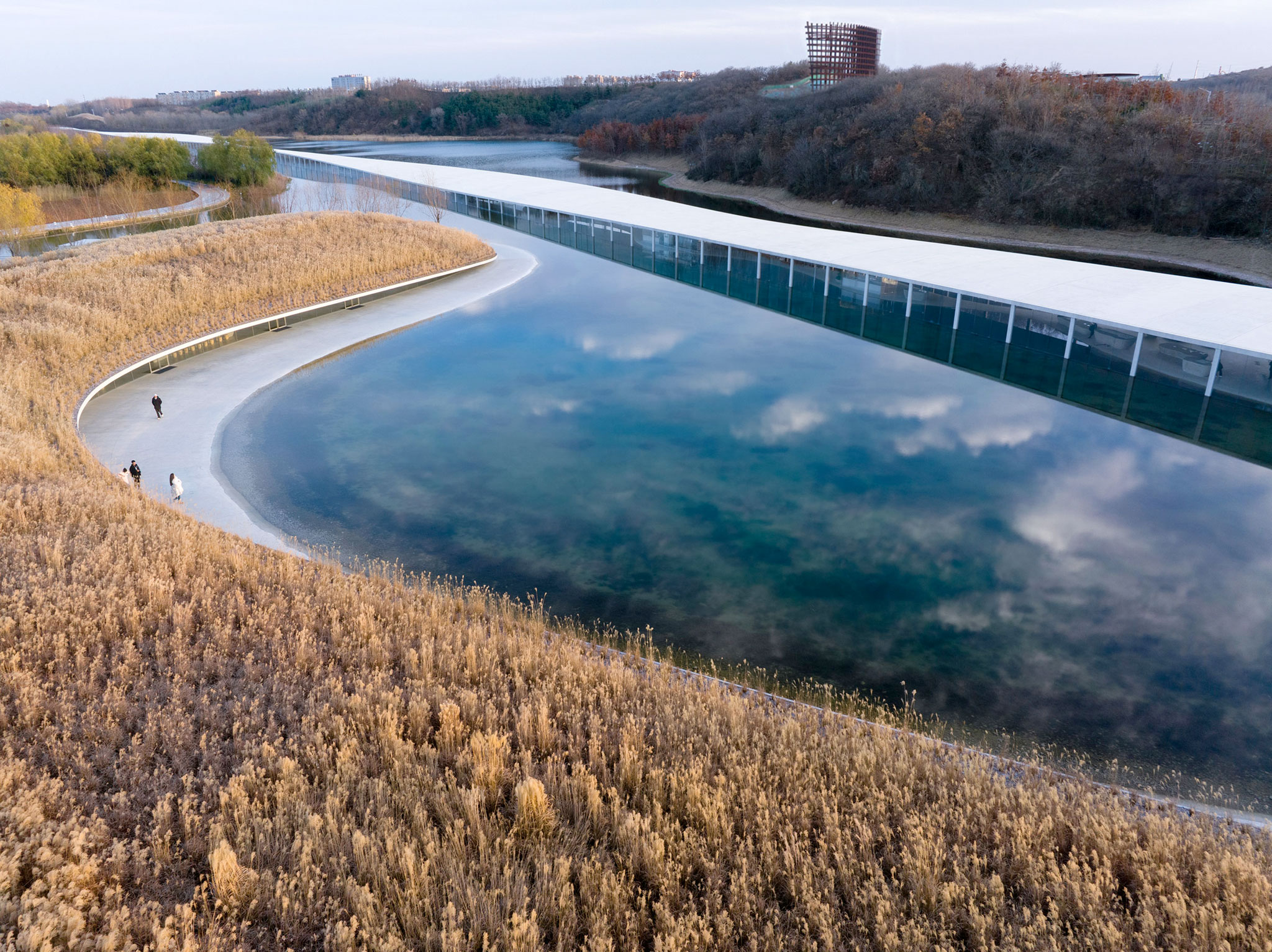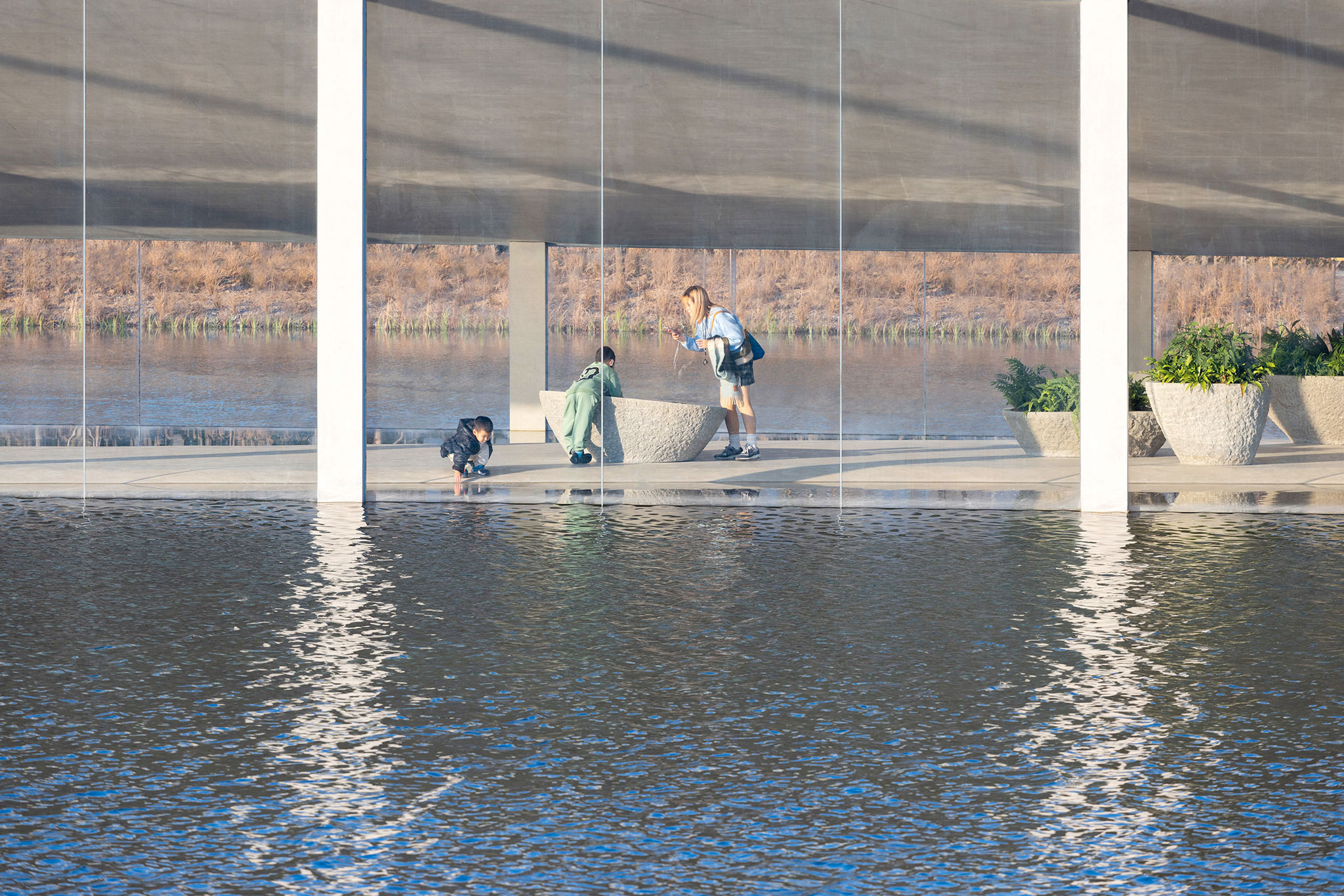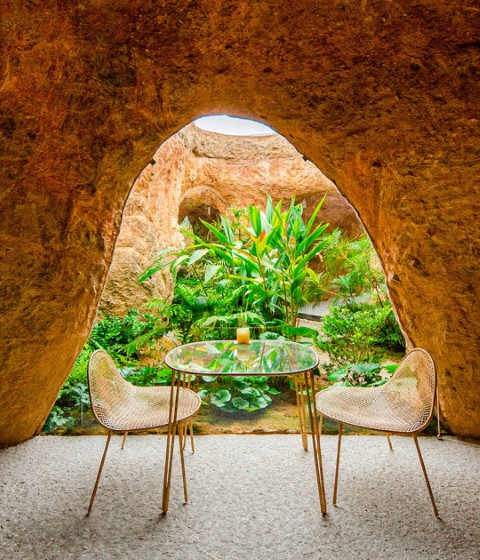Juna Ishigami raises a structure above the pond, which at times seems to submerge in it, with the aim of creating an "architectural promenade" in this abstract landscape. In its linear development, the building undergoes variations in width and curvature.
The building is supported by pillars, which seem to emerge from the bottom of the lake, a closed loggia with glass placed between the pillars. A system of openings allows water to enter the interior to generate the sensation of being in a sandbank. The project attempts to generate new external environments created within the architecture by different places and conditions, manifested as landscapes and natural phenomena with different characteristics.

Zaishui Art museum by Junya Ishigami. Photograph by arch-exist.

Zaishui Art museum by Junya Ishigami. Photograph by arch-exist.
Description of project by Junya Ishigami
This project is a large scale, where I endeavored to interpret architecture at the scale of landscape. It is located in Shandong Province, China, in an urbanizing region. Development in China takes place on a massive scale, and this project is no exception. Beside the Chaohe River, there is an artificial lake, and the development zone extends to the southwest of this lake, the site is located at its entrance.
I have designed a facility that integrates a visitor center, cafes, and a display area for chocolate. Visitors will park their cars in the parking area on the southeast side of the lake and cross it to the visit or proceed to the development zone. I had the idea of erecting a structure on top of the lake, intending to create an environment where people pass through this structure to cross the lake and naturally arrive at the development zone. With a length of approximately one kilometer, it will be as long as the distance from one bank of the lake to the other. From place to place, this extremely long roof will curve or vary in width and height, supported by columns rising from the bottom of the lake, with glass fitted between the columns. Apertures at the lower edge of the glass will open the interior to the lake's water. The water will enter and fill the interior, to make the floor emerge like a sandbank.

Zaishui Art museum by Junya Ishigami. Photograph by arch-exist.

Zaishui Art museum by Junya Ishigami. Photograph by arch-exist.
A landscape at the same scale as the exterior scenery will appear inside the building, generating a new external environment inside the architecture. The people will experience the exterior landscape newly manifested in the interior space as if they are strolling along the shoreline, and at the same time, they will be enveloped in a pleasant openness amid the continuity with the existing landscape surrounding the architecture. In winter, the surface of the lake will freeze, but the water beneath the ice connecting to the interior remains liquid. In this project, I recognized new external environments, created inside architecture by different places and conditions, manifest as landscapes and natural phenomena with distinct characteristics.






































































